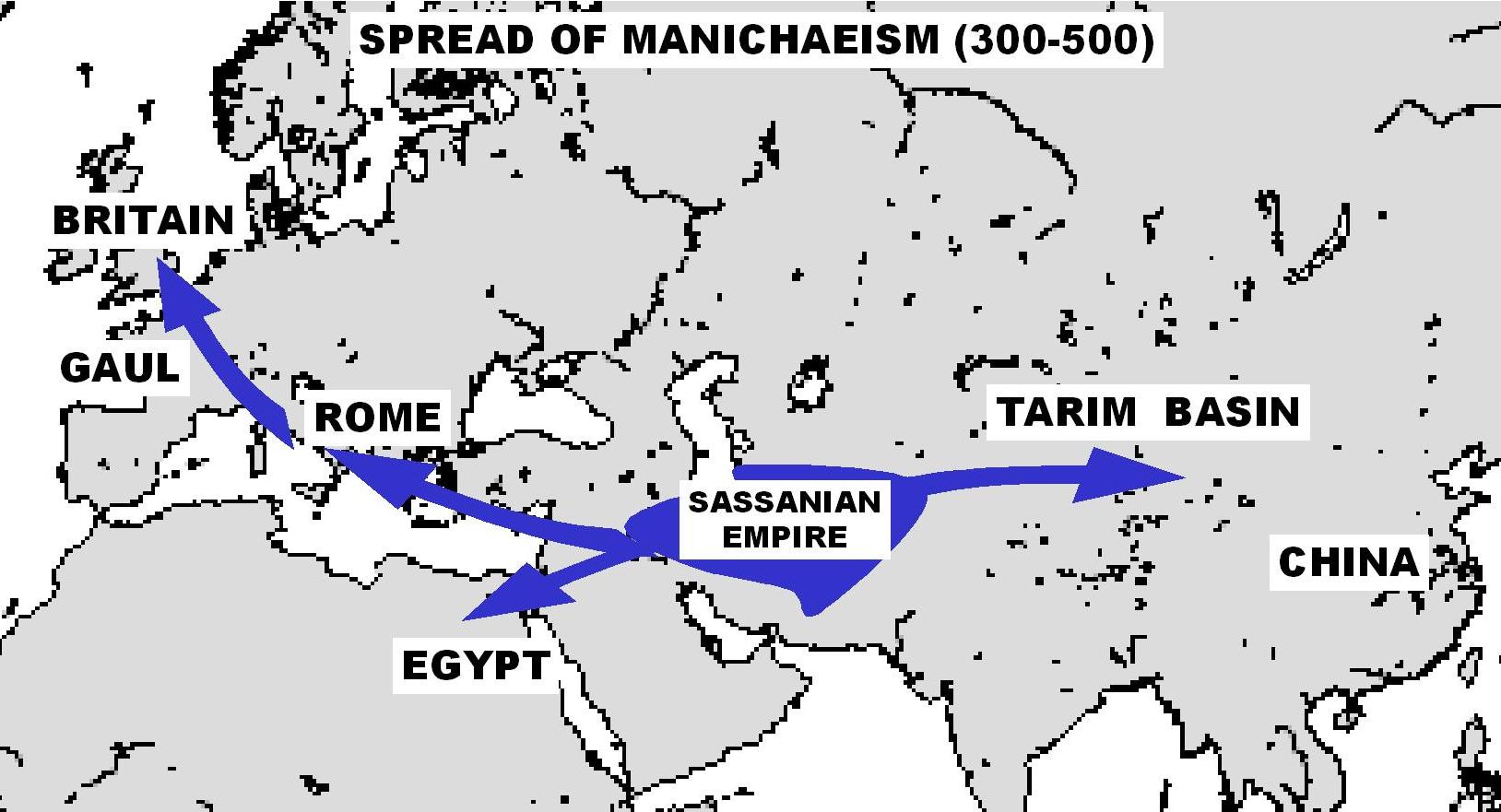- Gnosticism and Buddhism
Some scholars, such as
Edward Conze andElaine Pagels , have suggested thatgnosticism blends teachings like those attributed to Jesus Christ with teachings found in Eastern traditions.cite web|url=http://www.pbs.org/wgbh/pages/frontline/shows/religion/story/pagels.html| title=Extract from "The Gnostic Gospels"|author=Elaine Pagels|publisher=pbs.org|accessdate=2007-04-22]Philip Jenkins writes that, since the mid-nineteenth century, new and fringe religious movements have often created images of Jesus, presenting him as a sage, philosopher and occult teacher, whose teachings are very similar to those of Asian religions. He asserts that the images generated by these religious movements share much in common with the images that increasingly dominate the mainstream critical scholarship of the New Testament, especially following the rediscovery of the Gnostic Gospels found at Nag Hammadi in Egypt in 1945. He alleges that, in modern scholarly writing, Jesus has become more of a Gnostic, Cynic or even a crypto-Buddhist than the traditional notion of the reformist Jewish rabbi. cite journal |title=How Gnostic Jesus Became the Christ of Scholars |first=Philip |last=Jenkins |url=http://www.beliefnet.com/story/135/story_13528_1.html]
Jenkins acknowledges that "the Jesus of the hidden gospels has many points of contact with the great spiritual traditions of Asia."
Manicheism
Early 3rd-4th century Christian writers such as
Hippolytus of Rome andEpiphanius write about aScythianus , who visited India around 50 AD from where he brought "the doctrine of the Two Principles". According to these writers, Scythianus' pupil Terebinthus presented himself as a "Buddha" ("he called himself Buddas"Cyril of Jerusalem ). Terebinthus went toPalestine andJudaea where he met the Apostles ("becoming known and condemned" Isaia) [Catechetical Lecture 6 "Concerning the Unity of God. On the Article, I Believe in One God. Also Concerning Heresies. Isaiah" xlv. 16, 17. (Sept.)] , and ultimately settled in Babylon, where he transmitted his teachings to Mani, thereby creating the foundation of what could be called Persian syncretic Buddhism,Manicheism . We find evidence that Buddhist thought had major influence on the teachings of Mani:In the story of the Death of Mani [According to the Gnostic Bible by Willis Barnstone, here is one of many authenticating references proving the centrality of Buddhism in Mani's formulation of Gnosticism] :::It was a day of pain ::and a time of sorrow::when the messenger of light::entered death::when he entered complete
Nirvana "Following Mani's travels to the
Kushan Empire (several religious paintings inBamiyan are attributed to him) at the beginning of his proselytizing career, variousBuddhist influences seem to have permeated Manichaeism::Buddhist influences were significant in the formation of Mani's religious thought. The transmigration of souls became a Manichaean belief, and the quadripartite structure of the Manichaean community, divided between male and female monks (the "elect") and lay followers (the "hearers") who supported them, appears to be based on that of the Buddhist
sangha . (Richard Foltz, "Religions of the Silk Road")
thumb|380px|The spread of Manichaeism (300– AD 500). Map reference: World History Atlas, Dorling Kindersly.:Manichaeism spread with extraordinary rapidity throughout both the east and west. It reached Rome through the apostle Psattiq by AD 280, who was also in Egypt in 244 and 251. The faith was flourishing in theFayum area of Egypt in 290. Manichaean monasteries existed in Rome in 312 during the time of the Christian Pope Miltiades. By 354,Hilary of Poitiers wrote that the Manichaean faith was a significant force in southern France. Also, in the Great Song of Mani (13th-14th century) Mani is many times referred to as BuddhaMani .One of the founding fathers of western Christianity,
Augustine of Hippo was originally a Manichean.Essenes
Philip Jenkins writes:
:Theories of a possible Asian influence on the Jesus movement usually focused on the Essenes. Even orthodox scholars like Dean Mansel argued that Buddhist monks and missionaries had provided the inspiration for the monks and ascetics whom we find recorded in the Middle East before the coming of Jesus, like the Essenes and the related Egyptian sect of the Therapeutae. Some writers explored the idea that Jesus himself might have drawn on these esoteric traditions, as suggested by the title of Arthur Lillie's 1887 book Buddhism in Christendom, or, Jesus, the Essene. In 1880, Ernest von Bunsen argued that Christian messianic concepts derived from a common fund of tradition that was shared by Buddhists and Essenes. The Essenes, it was thought, provided a crucial link between Eastern mysticism and Western heresy, with Jesus as the pivot between the two trends. If Jesus had access to Buddhist ideas, and the Gnostic sects themselves preached reincarnation and other Asian themes, then once again this was evidence that Jesus' earliest teachings were best preserved among the so-called heresies.
Gospel of Thomas
Elaine Pagels has written that "one need only listen to the words of the Gospel of Thomas to hear how it resonates with the Buddhist tradition... these ancient gospels tend to point beyond faith toward a path of solitary searching to find understanding, or gnosis." She suggests that there is an explicitly Indian influence in the Gospel of Thomas, perhaps via the Christian communities in southern India, the so-called Thomas Christians.
Of all of the Nag Hammadi texts, the
Gospel of Thomas has the most similarities with Pure Land Buddhism. Edward Conze has suggested that Hindu or Buddhist tradition may well have influenced Gnosticism. He points out that Buddhists were in contact with the Thomas Christians. [cite book |first=Edward |last=Conze |title=Buddhism and Gnosis]Elaine Pagels notes that the similarities between Gnosticism and Buddhism have prompted some scholars to question their interdependence and to wonder whether "...if the names were changed, the 'living Buddha' appropriately could say what the Gospel of Thomas attributes to the living Jesus. " However, she concludes that, although intriguing, the evidence is inconclusive, since parallel traditions may emerge in different cultures without direct influence. [cite book |first=Elaine |last=Pagels |title=The Gnostic Gospels |location=New York |publisher=Random House |year=1979, repr. 1989 ]
References
Wikimedia Foundation. 2010.

